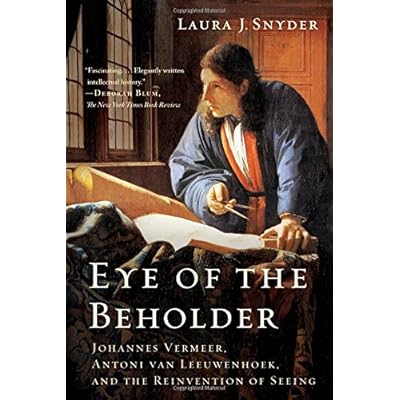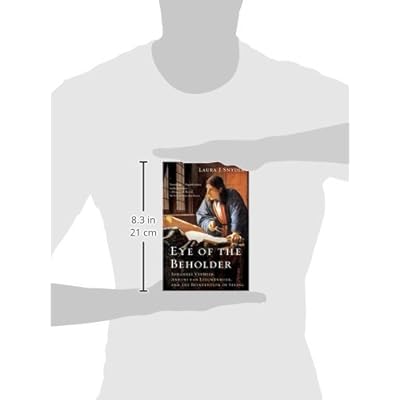Eye of the Beholder: Johannes Vermeer, Antoni van Leeuwenhoek, and the Reinvention of Seeing
Category: Books,Engineering & Transportation,Engineering
Eye of the Beholder: Johannes Vermeer, Antoni van Leeuwenhoek, and the Reinvention of Seeing Details
Review “Elegantly written intellectual history . . . fascinating.” - Deborah Blum, New York Times Book Review“An engaging and richly detailed work of interdisciplinary history.” - Jonathan Lopez, Wall Street Journal“Beautifully evokes the ambience of late-seventeenth-century Delft . . . revelatory about Vermeer’s aims and methods, helping to explain what is so mesmeric about his work.” - Philip Ball, Nature“[Snyder] paints this vibrant world with verve, adding a wealth of details―as if following the slow and conscientious working methods of her protagonists....[giving] us as readers a lively sense of this exciting period and a thorough insight into the wider implications of these technological developments.” - Hanneke Grootenboer, History Today“Irresistible. . . . [Snyder] ingeniously explores the minutiae of her subjects’ lives to reveal sweeping changes in how their world was understood―ones that still resonate today.” - Jonathon Keats, New Scientist“Laura Snyder is both a masterly scholar and a powerful storyteller. In Eye of the Beholder, she transports us to the wonder-age of seventeenth-century Holland, as new discoveries in optics were shaping the two great geniuses of Delft―Vermeer and van Leeuwenhoek―and changing the course of art and science forever. A fabulous book.” - Oliver Sacks“A thoughtful elaboration of the modern notion of seeing. Laura J. Snyder delves into the seventeenth century fascination with the tools of art and science, and shows how they came together to help us make sense of what is right in front of our eyes.” - Russell Shorto, author of Amsterdam: A History of the World's Most Liberal City“As in The Philosophical Breakfast Club, Laura Snyder tells the tale of a crucial moment in human discovery by focusing on the interplay between the personalities involved, in this case the great Dutch artist Johannes Vermeer and the amateur scientist Antoni van Leeuwenhoek, best known for his miniature microscopes and his pioneering work as a microbiologist. This was an age when artists as well as scientists explored nature, occasionally with the same technical means, such as optical devices. This delightful book is solidly researched but reads like a novel―and a good one at that!” - Walter Liedtke, Curator of European Paintings, The Metropolitan Museum of Art Read more About the Author Fulbright scholar Laura J. Snyder is the author of The Philosophical Breakfast Club, a Scientific American Notable Book, winner of the 2011 Royal Institution of Australia poll for Favorite Science Book, and an official selection of the TED Book Club. She is also the author of Eye of the Beholder and Reforming Philosophy. Snyder writes about science and ideas for the Wall Street Journal. She is a professor at St. John’s University and lives in New York City. Read more

Reviews
This is a major disappointment. A book about seeing that doesn't contain a single picture! This could have been a fascinating story about the intertwined lives of Vermeer and Leeuwenhook illustrated by their paintings and observations to explain the approaches and optical devices the book mentions. Instead, the reader is fed a large dose of details about numerous other personalities and their stories, much of which add nothing about the lives of the protagonists. This could have been suitable in a technical paper about the period, but bored me to death - who cares? What intrigues me the most is why the author, and, more importantly, the editor, made such bad choices. The only explanation that comes to mind is the cost of hardcopy color figures. This should no longer be a major consideration when such images can be rendered and read digitally at a much lower cost. The advantages of digital media over paper override one's need to hold a "real" book. Let those who can't be convinced pay for their "pleasure".



